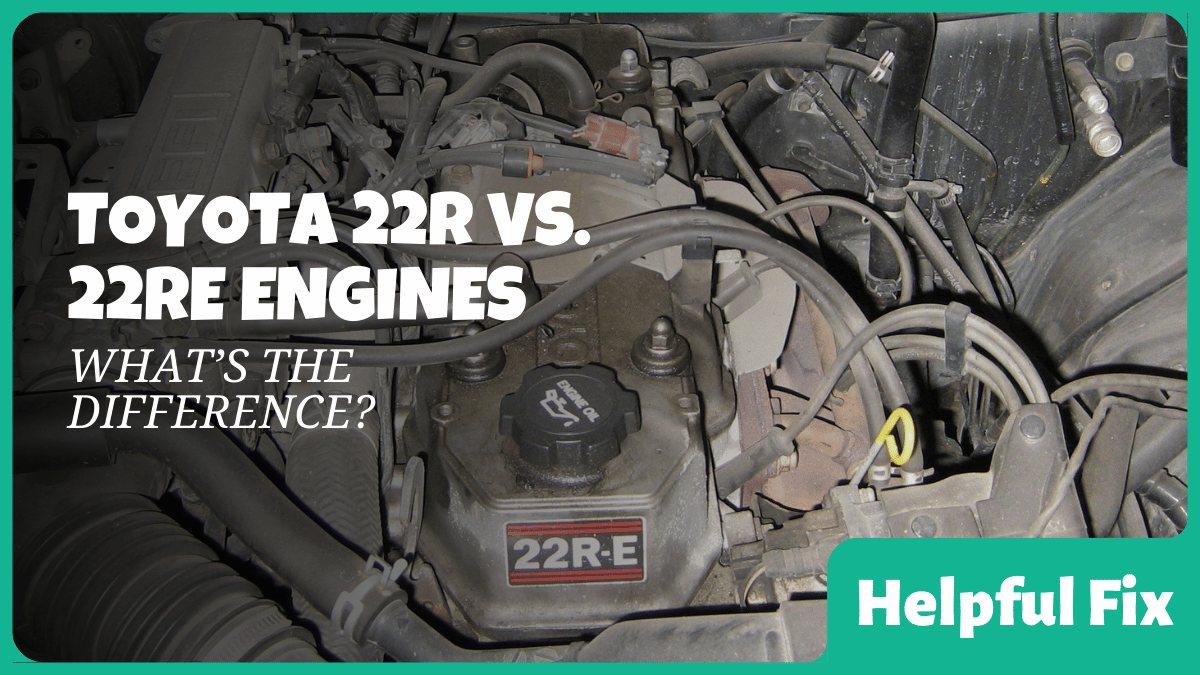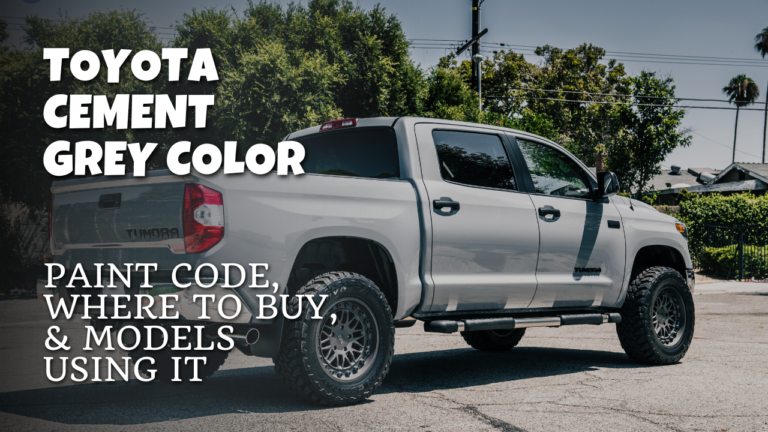22R vs 22RE: What’s the Difference?
Toyota’s 22R and 22RE engines are both part of the well-regarded “R” family, praised by enthusiasts for their reliability and durability. While they share many similarities, key differences in their fueling systems and internal components can significantly impact performance, maintenance, and modification potential. In this article, we’ll walk you through the basics of these two engines, highlight their differences, and provide some guidance on upgrades and modifications.
Overview: 22R and 22RE Engines
Background and Popularity
- Production
- 22R: Introduced around 1980 (often referenced as 1981 model year).
- 22RE: Introduced in 1982 as a fuel-injected variant of the 22R.
- Applications
- Commonly found in Toyota pickups (Hilux) and 4Runners.
- Valued by off-road enthusiasts for their simplicity and robustness.
- Engine Basics
- Both are 2.4L, 4-cylinder engines.
- Known for reliability, durability, and relative ease of maintenance.
Quick Comparison
| Engine | Fueling | Maintenance Complexity | Power Characteristics | Notable Trait |
|---|---|---|---|---|
| 22R | Carbureted | Simpler system | Good torque, slightly lower HP | Easier to work on (fewer electronics) |
| 22RE | Fuel-injected | Slightly more complex | Generally higher HP and better efficiency | More modern & precise fueling |
Major Differences Between 22R and 22RE
1. Fuel Injection System
- 22R: Carbureted engine
- 22RE: Electronic fuel injection (EFI)
Why it matters
- Fuel Efficiency & Performance: The 22RE’s EFI provides more precise fuel delivery, improving fuel economy and power output.
- Maintenance: A carbureted system can be simpler to fix if you’re comfortable tuning carbs, but may require more frequent adjustments. An EFI system can be more reliable overall but involves electronic components (ECU, sensors, injectors).
2. Cylinder Head & Valvetrain
- 22R Cylinder Head: Designed around carburetion, generally smaller intake and exhaust ports.
- 22RE Cylinder Head: Larger ports for EFI, different combustion chamber design, smaller combustion chamber volume overall.
Valvetrain
- 22R: Uses solid lifters.
- 22RE: Uses hydraulic lifters (generally quieter, lower maintenance).
- Camshaft Profiles: The 22RE cam is specifically ground for EFI needs (shorter duration, less lift).
3. Internal Components
- Pistons: The 22RE has pistons designed for lower compression (to optimize for EFI).
- Connecting Rods & Crankshaft: Revised in the 22RE to align with the fuel injection system’s requirements and different power curve.
- Overall Impact: These differences influence horsepower, torque, and how the engine responds to modifications.
Performance Comparison
Power and Torque
The 22RE generally makes slightly more horsepower than the 22R, partly thanks to its more precise fuel injection and cylinder head design. Meanwhile, the 22R—especially in earlier years—can offer strong low-end torque that many off-roaders appreciate.
| Engine | Horsepower (approx.) | Torque (approx.) |
|---|---|---|
| 22R | ~96 hp | ~129 lb-ft |
| 22RE | ~112 hp | ~142 lb-ft |
Note: Exact figures vary by year, market, and tuning.
Fuel Efficiency
Electronic fuel injection on the 22RE often results in better fuel economy. Below is a rough snapshot, but actual mileage depends on factors like vehicle weight, driving style, and gear ratios.
| Engine | City MPG | Highway MPG |
|---|---|---|
| 22R | ~18 | ~22 |
| 22RE | ~20 | ~24 |
Reliability
Both the 22R and 22RE have legendary reputations for reliability—it’s not uncommon to see these engines surpass 200,000 or even 300,000 miles with proper care.
- 22R
- Fewer electronic components, potentially less to go wrong.
- Carburetor can be temperamental if not maintained, especially in extreme temperature or altitude changes.
- 22RE
- EFI often runs more smoothly in various conditions (cold starts, high altitude, etc.).
- Electronic components (ECU, sensors) require diagnosis if issues arise.
Key Takeaway: Proper maintenance (regular oil changes, tune-ups, coolant flushes) is the biggest factor in either engine’s longevity.
Modifications and Upgrades
If you’re looking to squeeze extra performance out of your 22R or 22RE, there are two general approaches: bolt-on modifications and internal upgrades.
1. Bolt-On Upgrades
- Headers
- Improve exhaust flow, can boost horsepower/torque.
- Commonly made from stainless steel.
- Relatively straightforward installation.
- Cold Air Intake
- Enhances airflow with cooler, denser air.
- Can yield modest power gains.
- Usually easy to install.
- Performance Exhaust
- Freer-flowing than stock.
- Helps reduce backpressure and improve top-end power.
2. Internal Upgrades
- Camshaft (Cam) Profiles
- Aftermarket cams designed for higher lift or longer duration can significantly change power delivery.
- Choose a profile that matches your driving style (rock crawling vs. highway power).
- Pistons & Compression
- Forged pistons can handle more heat and pressure.
- Changing compression ratio can yield gains but often requires careful tuning.
- Connecting Rods
- Higher-strength rods are useful for engines pushed to higher RPM or turbo/supercharged builds.
Pro Tip: Internal upgrades can be more complex. If you’re not experienced with engine builds, consult or hire a professional for installation and tuning.
Which One Should You Choose?
22R:
- Pros: Simpler, fewer electronics, often slightly lower cost of ownership.
- Cons: Carburetor may require regular tuning; potentially less power and efficiency.
22RE:
- Pros: Better fuel efficiency, improved horsepower, easier cold starts/altitude compensation.
- Cons: More complex system (ECU, sensors), can require specialized diagnostic tools.
Ultimately, the “better” engine depends on your specific needs:
- Off-Road/Trail Use: Either is reliable, but many like the simplicity of the 22R if they’re comfortable tuning carbs.
- Daily Driving & Efficiency: The 22RE might be more convenient, especially in varied weather or altitude.
- Budget & Parts Availability: Both engines enjoy strong aftermarket support, though fueling components for the 22RE can be pricier.
Conclusion
Toyota’s 22R and 22RE engines remain beloved by truck and 4×4 enthusiasts for good reason: they’re tough, dependable, and versatile. While the two share a common foundation, the shift from carburetion (22R) to electronic fuel injection (22RE) brings changes in power, efficiency, and maintenance requirements.
- If you prize simplicity, are comfortable with carb tuning, and want a straightforward, budget-friendly setup, the 22R might be your ideal choice.
- If you prefer modern reliability, better fuel economy, and a bit more horsepower, opt for the 22RE.
No matter which you choose, regular maintenance and thoughtful modifications can ensure these iconic Toyota engines continue to perform for many years and miles to come.
Additional Tips
- Check Local Emissions Requirements
- In some regions, a fuel-injected engine can make it easier to comply with emissions testing.
- Plan Your Modifications Carefully
- Set realistic goals for power, torque, and drivability.
- Avoid mismatched parts that can create tuning headaches.
- Gather Resources & Expertise
- Toyota forums and off-road communities can be invaluable.
- If in doubt, consult a trusted mechanic or engine builder.
- Maintain Proper Documentation
- Keep track of modifications and maintenance for troubleshooting and resale purposes.
Disclaimer
This article is for informational and enthusiast purposes only. Always refer to Toyota’s official service manuals or consult a qualified mechanic when performing engine work. Modifications may affect vehicle warranty, emissions compliance, and drivability. Perform any upgrades at your own discretion and risk.



